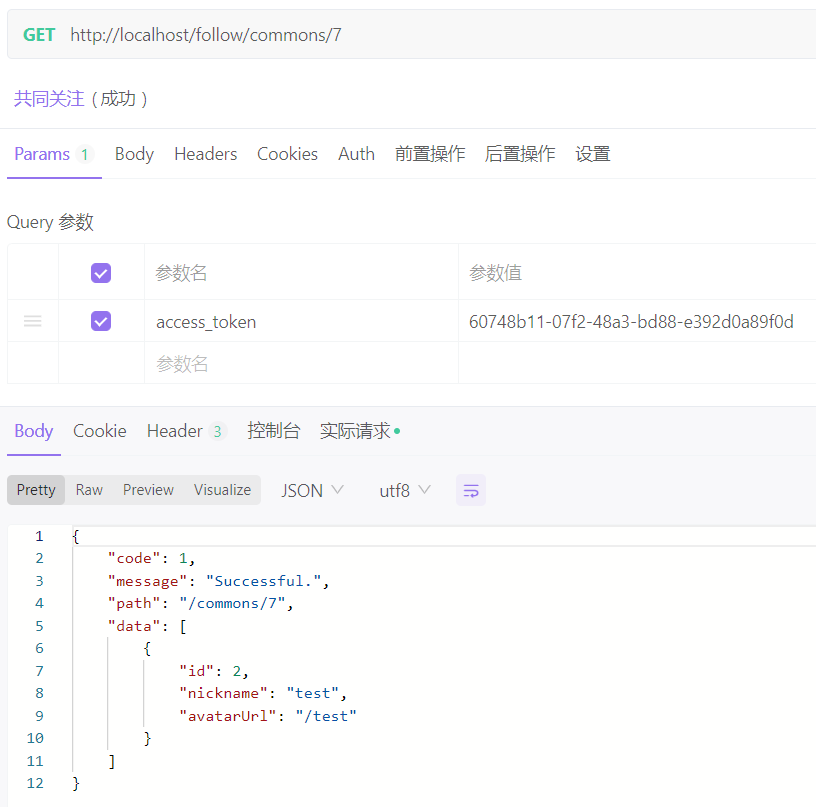1.实验要求
- 利用注解、反射和工厂模式设计一个简单的IoC容器
- 该IoC容器包含3个注解和一个IoC容器类(AnnotationConfigApplicationContext),其定义如下:
注解:
| 注解 | 含义 |
|---|---|
| @Component | 标注Bean |
| @Autowired | 标注需要被注入的对象 |
| @Configuration | 标注为配置类 |
| @ComponentScan | 注解扫描器 |
IoC容器类:

3.自定义两个业务类Group和User,创建一个测试类Test,对IoC容器进行测试:

2.实验思路
本实验要求我们通过反射和自定义注解的设计,模拟实现spring框架IoC容器类的基础功能,要实现的注解有@Component、@Autowired、@Configuration和@ComponentScan
首先我们需要明确这些注解在spring框架中本身的功能是什么:
- @Component:将实体类实例化到容器中
- @ComponentScan:配置包路径,到该路径下去寻找bean
- @Autowired:自动装配(定义一个变量接收注入的类)
- @Configuration:标识为配置类
所以在该实验中,我们需要将自定义四个注解,然后将Group和User类使用@Component注解,在User类中创建Group类的实例化对象并设置为自动装配,这样就能在User类中调用Group类的方法;
然后我们需要自己实现一个IoC容器类,处理自定义的注解的基本逻辑;
接下来在test类中实例化IoC容器,并从中取得bean,调用其方法
3.实验代码
pom文件依赖配置:
<dependencies><dependency><groupId>org.springframework</groupId><artifactId>spring-context</artifactId><version>5.2.10.RELEASE</version></dependency><dependency><groupId>org.springframework</groupId><artifactId>spring-webmvc</artifactId><version>5.2.14.RELEASE</version></dependency><dependency><groupId>junit</groupId><artifactId>junit</artifactId><version>4.12</version><scope>test</scope></dependency>jdk版本:1.8
开发工具:IDEA
3.1自定义注解
@Autowired:
//自定义注解:标注需要被注入的对象
@Target(ElementType.FIELD)
@Retention(RetentionPolicy.RUNTIME)
public @interface Autowired {
}@Component:
//自定义注解:标注Bean
@Target({ElementType.TYPE,ElementType.FIELD})
@Retention(RetentionPolicy.RUNTIME)
public @interface Component {String value() default "";
}@ComponentScan:
//自定义注解 注解扫描器
@Target(ElementType.TYPE)
@Retention(RetentionPolicy.RUNTIME)
public @interface ComponentScan {String value() default "";
}@Configuration:
//自定义注解 标注为配置类
@Target(ElementType.TYPE)
@Retention(RetentionPolicy.RUNTIME)
public @interface Configuration {
}3.2 定义实体类
Group:
@Component
public class Group {public String getBeanName(){return this.getClass().getSimpleName();}
}User:
@Component
public class User {@Autowiredprivate Group group;public void print(){System.out.println("group name as follow:");System.out.println(group.getBeanName());}}3.3 定义配置类
MyConfig:
@Configuration
@ComponentScan("org.example")
public class MyConfig {
}3.4 定义IoC容器类
接口:ApplicationContext
public interface ApplicationContext {Object getBean(Class clazz);
}实现类:AnnotationApplicationContext
public class AnnotationApplicationContext implements ApplicationContext {//定义Map,用于存放bean对象private Map<String, Object> beanFactory = new HashMap<>();//创建IOC容器类时执行的方法public AnnotationApplicationContext(Class configClass) throws InstantiationException, IllegalAccessException {//处理@Configuration的逻辑(没有实质性的内容,只是要求必须有配置类)try {//获取@Configuration类型的对象Configuration configuration = (Configuration) configClass.getAnnotation(Configuration.class);//如果对象为空,则引发异常if (configuration.annotationType().toGenericString().equals("")) {//没有具体逻辑}} catch (Exception e) {System.out.println("找不到配置类");System.exit(-1);}//处理@ComponentScan的逻辑/*总的来说,就是扫描某一路径下的所有类,如果有的类被Component注解,则创建其实例(一个bean),加入beanFactory中如果有的类中的对象(一个Field类型的数据)被@Autowired注解标注,则用beanFactory中同类型的bean替代该对象*/try {ComponentScan componentScan = (ComponentScan) configClass.getAnnotation(ComponentScan.class);//根据componentScanValue的值来获取要扫描的路径(默认值处理的不是很好)String componentScanValue = componentScan.value().toString();String path = "";if (!componentScanValue.equals("")){String[] splitValue = componentScanValue.split("\\.");for (int i = 0; i < splitValue.length; i++) {path += splitValue[i] + "/";}path = "classpath*:" + path + "**/*.class";}else {path = "classpath*:org/example/**/*.class";}//扫描路径,获取所有的classPathMatchingResourcePatternResolver resolver = new PathMatchingResourcePatternResolver();Resource[] resources = resolver.getResources(path);for (Resource res : resources) {//获取类名String clsName = new SimpleMetadataReaderFactory().getMetadataReader(res).getClassMetadata().getClassName();//获取类对象Class thisClass = Class.forName(clsName);//判断当前类是否被Component注解标注Component component = (Component) thisClass.getAnnotation(Component.class);if (component != null) //说明该类被Component注解标注{Constructor c = thisClass.getConstructor();Object o = c.newInstance(); //创建该类的实例beanFactory.put(o.getClass().getSimpleName(), o);//加入beanFactory中}//处理@Autowired注解for (Object bean : beanFactory.values()) { //查看beanFactory中所有的beanClass beanClass = bean.getClass();Field[] beanFields = beanClass.getDeclaredFields(); //获取bean的fieldsfor (Field field : beanFields) {if (field.isAnnotationPresent(Autowired.class)) { //如果被Autowired注解标注Object beanD = beanFactory.get(field.getType().getSimpleName()); //获取beanFactory中的beanfield.setAccessible(true); //关闭安全检查field.set(bean, beanD); //用beanFactory中的bean来代替当前bean}}}}} catch (Exception e) {e.printStackTrace();System.out.println("没有ComponentScan注解");System.exit(-1);}}//getBean方法,获取某个bean(通过class)@Overridepublic Object getBean(Class beanClass) {return beanFactory.get(beanClass.getSimpleName());}}3.5 测试类
public class test {public static void main(String[] args) throws InstantiationException, IllegalAccessException {//创建IOC容器,传入的参数是当前的配置类//因此可以根据@Configuration和@ComponentScan("org.example")来走接下来的逻辑AnnotationApplicationContext context = new AnnotationApplicationContext(MyConfig.class);//从容器中获得user对象User user = (User) context.getBean(User.class);//执行对象方法//可以看到通过user对象执行了group类的方法getBeanName()//但user类中,我们并没有实例化group对象,可以看到是通过注解来实现的user.print();}
}4.实验结果

成功在user类中调用了group类的方法;
5.源码
上面的代码是完整的,下附工程文件:
https://download.csdn.net/download/qq_51235856/87944324


